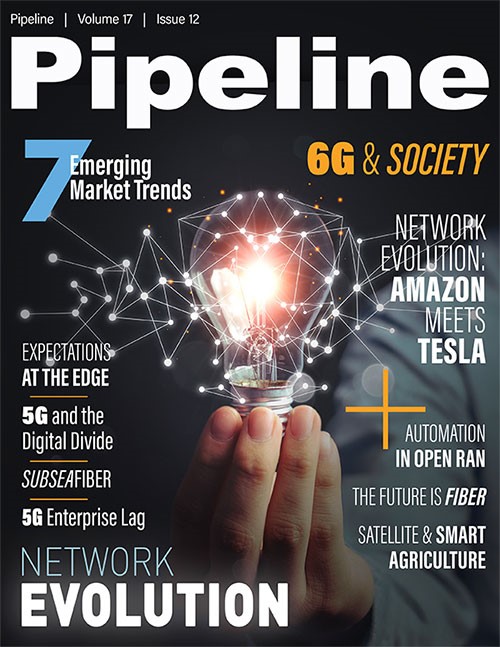Bridging the Digital Divide with 5G Access
By: Walter Cannon

Today, innovation is constant. Across every industry, groundbreaking advancements bring about real-world change every day. And the digital industry plays a big part. Each decade brings a new era of technology, and with it, a new way of doing things.
This opportunity, however, is not the same for everyone or every business everywhere. The reality is that some areas fall behind. We see this happening before our eyes when it comes to Internet speed and connectivity. Some regions have begun to establish infrastructure that prevents a person from ever losing an Internet connection. Others face a different scenario, where communities may have access to the newest devices but find themselves in an area without the connectivity to support them.
This is what we call the digital divide—and bridging the divide is necessary to keep up with the demand for everything digital, everywhere. Bringing communities together to cohesively solve these problems also spawns innovation. As more devices become 5G-enabled, 5G infrastructure is even more essential to the future of our digital world. Without building the infrastructure needed to support 5G, technology will be unable to evolve in the way to make promises into reality. This article examines the journey from 4G to 5G and illustrates the type of innovation that makes bridging the digital divide possible.
The 4G evolution
As we embrace the 5G era, understanding our journey to 4G is crucial to navigate forward. The 4G revolution created jobs for millions, spearheaded vast economic growth, and gave birth to new industries. Wireless speeds skyrocketed, while the cost to access them dropped, and consumers have become completely reliant on 4G network capabilities—for good reason.
It’s important to explore how the 4G evolution unfolded. Unlike the chicken and the egg, it’s easy to pinpoint what came first. Before 4G networks and devices even existed, United States wireless providers began building mass infrastructure, from cell sites to area networks large and small. Once this initial infrastructure was created, the ability to access and use 4G network capabilities became a reality.
A great example of a 4G byproduct is the application industry. Thousands of web-based applications (apps) were developed because 4G network capabilities could support them. If 4G infrastructure wasn’t enabled, a large niche of technology that has become crucial to our everyday functioning wouldn’t be supported. Without 4G, we would not have the ability to order food or rides through Uber, view sports news, play online games, conduct mobile banking, and countless other functions. The progression from the initial building blocks—a pipedream of what is possible—to reality is important to note because the 5G revolution will be similar. Our existing digital infrastructure and connectivity enable innovation to naturally progress.
![]() And we’re only on an upward trajectory. In the year
2010, Americans consumed approximately 388 billion megabytes of data. Nearly a decade later, this number has surged: it was up to 37 trillion megabytes in 2019 (as reported by CTIA in 2020). This
illustrates the impact of 4G on Americans’ everyday life. Considering the unprecedented development of wireless devices and their ever-increasing capability, this leap was inevitable. It’s
fair to expect a similar trajectory with the 5G revolution—and most of it has not even been developed or realized yet. This is why building today’s 5G infrastructure is so important. Furthermore,
building this infrastructure now will pave the way for the coming decades—and this vision is what we hope will be driven by the growth of smart cities in the coming decades.
And we’re only on an upward trajectory. In the year
2010, Americans consumed approximately 388 billion megabytes of data. Nearly a decade later, this number has surged: it was up to 37 trillion megabytes in 2019 (as reported by CTIA in 2020). This
illustrates the impact of 4G on Americans’ everyday life. Considering the unprecedented development of wireless devices and their ever-increasing capability, this leap was inevitable. It’s
fair to expect a similar trajectory with the 5G revolution—and most of it has not even been developed or realized yet. This is why building today’s 5G infrastructure is so important. Furthermore,
building this infrastructure now will pave the way for the coming decades—and this vision is what we hope will be driven by the growth of smart cities in the coming decades.
The US wireless industry
In just several short years, the US wireless industry has become not just a staple, but the backbone of our economy. If it were its own country, the US wireless industry would be the 21st-largest global economy in the world. Furthermore, the wireless industry has established itself as one of the largest job creators in the national economy. Back in 2011, approximately 3.7 million jobs were connected in some way to the wireless industry, equal to 2.4 percent of the 153.1 million people employed during



















